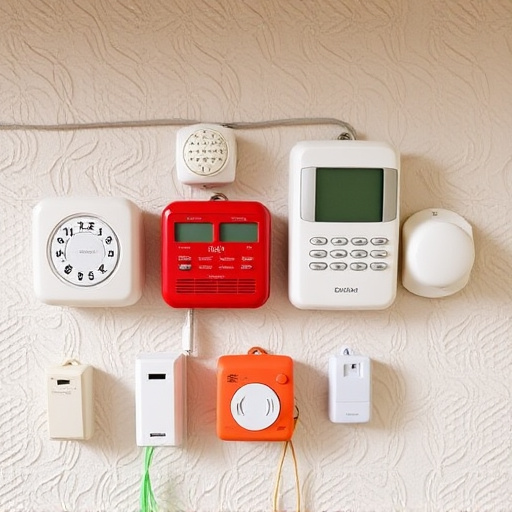Wrist Mounted Personal Safety Alarms offer discreet yet powerful protection with GPS tracking, distress signals, and automatic fall detection. These portable devices enable swift emergency responses, enhancing safety for outdoor activities, travel, and personal emergencies, especially for women and vulnerable individuals. Advanced features like location-based activation and motion sensors ensure prompt help arrival, revolutionizing personal security in urban and remote areas.
Staying safe on the go has never been more crucial. With the rise of personal mobility, wrist-mounted personal safety alarms are transforming individual security. These compact devices, designed for ease and efficiency, offer a range of features from basic distress signals to advanced GPS tracking. This article delves into the world of wrist-mounted safety alarms, exploring their benefits, key functionalities, and how they can be deployed effectively. Discover how these innovative tools enhance personal security in our modern world.
- Understanding Wrist-Mounted Safety Alarms
- Features and Benefits of Personal Distress Signals
- How Mobile Alarms Enhance Personal Security
- Deployment Strategies for Effective Alarm Activation
Understanding Wrist-Mounted Safety Alarms
Wrist-mounted personal safety alarms have emerged as a popular and convenient solution for individuals seeking immediate protection. These compact devices, designed to be worn on the wrist like a watch, offer a discrete yet powerful way to ward off potential threats. By simply pressing a button, users can trigger a loud alarm that startsle and distracts attackers, providing crucial seconds to escape or summon help. This simple yet effective mechanism has revolutionized personal safety, especially for women and individuals who may be vulnerable in certain situations.
Unlike traditional alarms that require activation from a central panel, wrist-mounted safety alarms are portable and user-initiated. They are often equipped with GPS tracking features, allowing emergency services to pinpoint the wearer’s location if needed. Additionally, some advanced models include distress signal functions, enabling users to send pre-set alerts to trusted contacts or local authorities in case of an emergency. This technology empowers individuals to take charge of their safety while offering a sense of security and peace of mind.
Features and Benefits of Personal Distress Signals
Personal distress signals, often integrated into wrist-mounted personal safety alarms, offer a discreet yet powerful tool for self-protection. These innovative devices are designed to provide peace of mind by allowing users to quickly and silently alert others in case of an emergency. With just a press of a button, a loud alarm is triggered, immediately drawing attention and summoning help. This feature is particularly valuable in situations where verbal communication is difficult or dangerous, such as during outdoor activities, personal emergencies, or when traveling alone.
The benefits extend beyond the immediate distress signal. Wrist-mounted alarms often include GPS tracking, enabling emergency services to pinpoint the user’s location with accuracy. Additionally, some devices offer automatic fall detection, which can be life-saving for vulnerable individuals or those engaged in high-risk activities. These advanced features make personal safety alarms versatile tools, catering to a range of needs and ensuring users feel secure in various environments.
How Mobile Alarms Enhance Personal Security
Mobile safety alarms with distress signals, particularly those designed as wrist-mounted personal safety alarms, have become invaluable tools for enhancing personal security in today’s world. These compact yet powerful devices offer peace of mind by allowing individuals to quickly and discreetly summon help in case of emergencies. With a simple tap or press, users can trigger an alarm that not only alerts nearby friends, family, or emergency services but also provides real-time location data, ensuring swift response times.
The integration of distress signals into mobile alarms has revolutionized personal safety, especially for those who frequently find themselves in unfamiliar environments or isolated areas. Whether while traveling, hiking, or even walking home late at night, these alarms provide an extra layer of protection. Wrist-mounted designs ensure they are always within reach, ready to be activated when needed, and their compact size makes them easy to carry without causing discomfort or drawing unnecessary attention.
Deployment Strategies for Effective Alarm Activation
When it comes to deployment strategies for mobile safety alarms with distress signals, especially wrist-mounted personal safety alarms, location-based activation is a game-changer. These devices use GPS technology to automatically trigger an alarm and send out emergency signals when the wearer ventures into an area where they feel unsafe or are unable to communicate. This ensures that help arrives swiftly, even in remote locations or bustling urban settings.
Complementing this, motion sensors play a crucial role in enhancing effectiveness. By detecting sudden movements or inactivity for a set period, these alarms can initiate distress signals without requiring manual activation. This is particularly beneficial for individuals who might be incapacitated or unable to react quickly during an emergency situation.
Wrist-mounted personal safety alarms, also known as distress signals, are a revolutionary tool that enhances individual security. By integrating these compact devices into our daily routines, we can navigate the world with added peace of mind. Their ability to quickly alert emergency services or loved ones in times of need makes them an invaluable asset for personal safety. With various features and benefits, including GPS tracking and long-lasting batteries, these mobile alarms offer a simple yet effective solution to stay protected on the go. By understanding their deployment strategies and embracing this modern technology, we can ensure our well-being and foster a safer environment.
